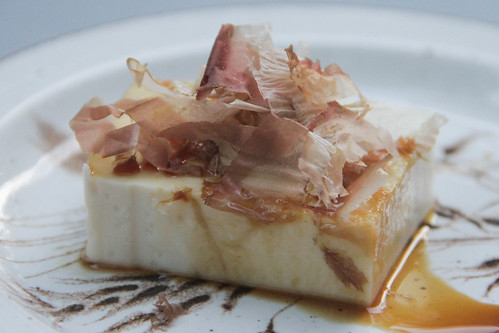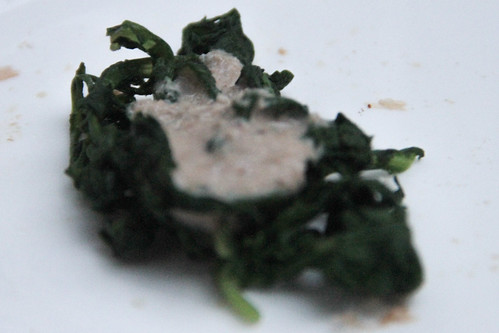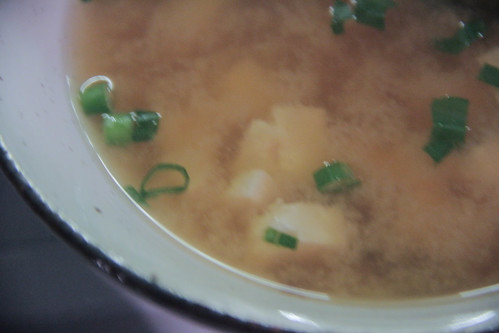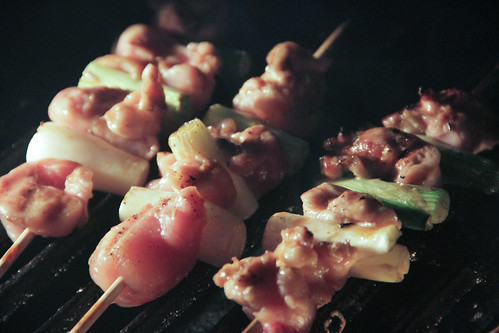Meal 85: Japan
Japanese cuisine is a real delight of variety of cooking technique, flavor balance, textures and seasonal sensitivity, which is why it’s a shame that most Westerners only know it through the narrow (though tasty!) lens of sushi. Accordingly, for this meal, the last at our Brooklyn apartment, I resolved to get nowhere near the stuff, and instead showcase an admittedly small fraction of the rest of what’s on offer, with an inclination toward traditional summertime foods.
Having come of age during the height of America’s economic intimidation by and cultural fascination with modern Japan, that country had an outsized influence on my childhood. I first went when I was nine years old on a one-week elemetary-school exchange (who knew such a thing existed!) outside of Osaka, then again in middle school, high school, and then a few years ago for work. I went to a Japanese Saturday school for a few years, studied the language in high school and college, and cooked quite a bit of Japanese food with my parents throughout middle and high schools. Alas, I’ve lost most of the language, but I’ve remembered quite a few bits about the cuisine that helped in the research for and preparation of this meal.

I did as much prep in advance as possible, because we had a World Cup match to watch! After the US and Portugal played to an agonizing tie, a bunch of folks came over: Diana, Jeff, Elly, Erika, Carolyn, Matt, Catherine, and more!
Mugicha | Cold barley tea
Having grown up on the West Coast, I didn’t know about humidity, so when I went to Japan in August after graduating eighth grade, I was just about knocked on my ass. The saving grace was this incredibly refreshing, smoky-nutty barley infusion. The standard packaging is enough to make 54 liters of the stuff, which ought to give an indication of its addictiveness. If you’re closer to a Korean market, look for borucha, which is as far as I can tell the same thing.
Hiyayakko | Cold tofu appetizer | Recipe

At the end of a hot day, this simple little appetizer is a lovely way to ease into the meal. The softest tofu is topped with a bit of grated ginger and scallions, and kissed with a bit of a chilled sauce. Easy, gentle, inviting.
Kyuuri to wakame no amasuzuke | Cucumber and seaweed pickles | Recipe

Thanks to the preponderance of sushi restaurants, about the only bit most people experience of the wide world of Japanese pickles is the little bit of ginger — which, sadly, is usually died pink to cover over imperfections. (You know ginger is naturally a very pale yellow, right?) Since I didn’t have time for some of the long, salt-based pickles that can take months or even years, I went for an overnight marinade of thinly sliced cucumbers and the spindly wakame seaweed in a tangy-sweet blend of rice vinegar and the curious sweet rice wine known as mirin. Another refreshing and appetite-stimulating starter.
Goma ai shingiku | Chrysanthemum greens with sesame sauce

Blanched spinach with sesame sauce was a common first course for Japanese meals at home growing up, but I'd never realized until Elly mentioned it that the dish can be made equally well, and in a slightly more exotic fashion, with chrysanthemum greens. They're a bit more bitter and herby than spinach, and more toothsome, but still shrink down to almost nothing just the same. With the thickly textured yet gently flavored sauce, it's another good addition to a lineup of summer nibbles.
Miso shiru | Miso soup | Recipe

As with most simple soups, the key is the broth. At the heart of this and just about every Japanese soup — and, heck, many Japanese foods beyond soup — is what’s known as dashi, made with wide strips of natural-MSG-laden kombu seaweed and impossibly thin flakes of dried shaved bonito called katsuobushi that lends an utterly clean fishy flavor. While I have cooked dozens of Japanese meals in my life, I’ve never made dashi from scratch, and I’m glad I did: as with so many things, a little extra effort lends a flavor that’s purer and more satisfying. The miso, made from fermented soybeans and adding a bit of body and tang, is but an afterthought, stirred in at the end right before a baptism of tofu, wakame seaweed, and scallion nibbles. Despite the heat, everyone finished their bowl!
Saba shioyaki | Broiled mackerel | Recipe

Some of the best foods are truly the simplest, the ones that combine the good fortune of fresh ingredients with just enough manipulation to bring out its best. They happened to have local mackerel at the neighborhood farmers market (though I think it’s more accurate to call fishermen hunters than farmers!), and all I did was salt the filets long enough to draw out a bit of liquid, and broil them skin-side-up for about ten minutes. I’ll leave it to you to decide if the wedge of lemon on the side was cheating on nature.
Negima yakitori | Chicken and scallion skewers | Recipe

Through this sweet-glazed chicken kabob, Japan has made a world-class contribution to the constellation of grilled meat. In contrast to some other dishes that delicately present subtle flavors in genteel portions, yakitori is bold, brash, and brutish, rich and meaty chunks rippedp with the teeth off a skewer held by increasingly sticky fingers and washed down with a big gulp of beer. And unlike the neatly arranged bento and other precisely apportioned food, yakitori is ordered one after another, the empty skewers totaled up to calculate the bill.
This was certainly the most labor-intensive dish, and one that admittedly most Japanese home cooks wouldn’t do — it’s the equivalent of making your own ketchup. But just as homemade ketchup tastes better than the already-good bottled version, so does this yakitori sauce. Once thickened and cooled, it’s used in abundance, generously slathered time and again on the grilling skewers to lacquer on layers of salty-sweet richness. It turned out great and everyone enjoyed it; my one improvement for next time would be to cook them half-way before the guests arrive, because it took longer than I’d hoped to grill them all up from raw.
Zaru soba | Cold buckwheat noodles with dipping sauce | Recipe
Along with mugicha, the barley tea, my food memories of summertime Japan are full of these cold buckwheat noodles. Slightly chewy and surprisingly easy to grip with chopsticks, they’re run through a soy sauce-dashi dipping sauce — zaru is an onomatopoeia for the sound the noodles make when sloshed through the sauce — then slurped as a cooling delight. Zarusoba often serves as the end of a meal, a cheap and filling way to top off the tank if the more expensive protein and vegetables didn’t suffice. I love the texture, the flavor, and the temperature, and of course the memories they all evoke. Somehow I always manage to finish my bowl.